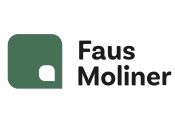Special attention to advertising expressions taking into account who are the intended recipients
Resolutions of the Jury of Advertising of 30 July “Maximum Protection Caries” and “Smydesign Dental Esthetics, Smyone Implantology and Smysecret Orthodontics”
CAPSULAS Nº 155
“Maximum” is a top parity expression
In this case (Procter & Gamble vs. Colgate), the claim was submitted against an internet advertisement showing the labeling of the toothpaste “Colgate Maximum Protection Caries”.
The claimant considered that the expression “Maximum Protection Caries” suggests that the toothpaste offers protection equal to the maximum protection possible, which was misleading. P&G alleged that the product, classified as cosmetic, contained the level of fluoride expected for cosmetics (up to 0,15%), but that there are other toothpastes classified as personal hygiene products with a higher level of protection.
Colgate argued that its toothpaste had the maximum level of fluoride expected for the products of its class, and thus it could use the sentence put into question; P&G alleged, successfully, that the average consumer would not be aware of the classification of the product as a cosmetic and would take the expression “Maximum” as meaning that the product offers the maximum level of protection against any type of toothpaste.
The Jury concludes that the controversial wording is a top parity assumption and that it is necessary to determine to whom the comparison is addressed. At this stage, the Jury remarks that it is very difficult that an average consumer could consider the expression “Maximum protection caries” as restricted only to cosmetics, and the Jury understands that to make such a statement, Colgate should prove that its product offers a protection against caries higher than any other toothpaste, including those classified as personal hygiene products.
Finally, the Jury concludes that the fact that Colgate credited the superiority of its product against Fluocaril -a personal hygiene product marketed by P&G- was not enough to credit a top parity statement.
Promotion of medical devices
In this case, a College of Dentistry and Stomatology submitted a claim against an advertisement of “Smydesign”, “Smyone” and “Smysecret”, claiming it breached article 78.6 of Law 29/2006 which prohibits promotion of medical devices towards the general public when such products are exclusively intended to be used by healthcare professionals.
The advertiser claimed that “Smydesign”, “Smyone” and “Smysecret” were medical procedures, protocols and techniques, not products. The Jury did not accept this reasoning as said denominations were registered in the Trademark Office as Class 10 products. Moreover, the online advertisement mentioned products, not protocols or techniques.
Consequently, the Jury considered that the advertising infringed article 78.6.
